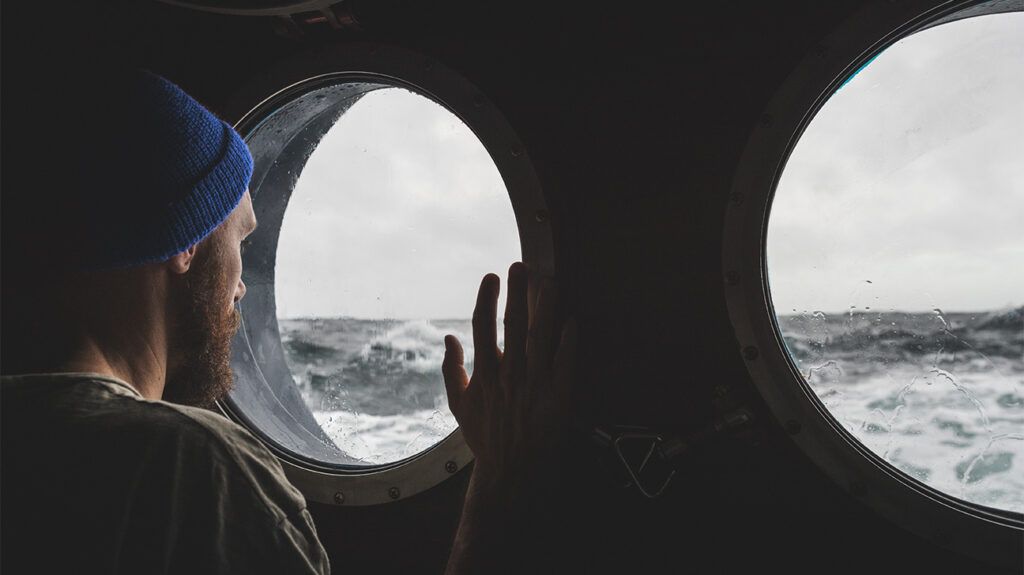Submechanophobia is the term for the fear of submerged artificial objects. It is a type of specific phobia.
If a person has submechanophobia, they will usually experience fear when thinking about mechanical objects underwater.
Submechanophobia can cause fear and anxiety in someone who comes into contact with submerged objects or even thinks about them.
This article outlines submechanophobia, including its symptoms, causes, and other related phobias.

Submechanophobia is the term for a fear of artificial objects that are underwater.
People with submechanophobia often have a fear of objects, such as:
- buoys
- submarines
- sunken ships
- other objects sitting beneath the water
Submechanophobia is a form of specific phobia.
Specific phobias
Specific phobias are often irrational. They can cause a person to experience severe symptoms, which may affect their daily life.
Research suggests that specific phobias affect approximately
If a person has submechanophobia, thinking about sunken objects may cause them to experience symptoms similar to those of other types of specific phobias.
Common symptoms of submechanophobia may
- a fear or anxiety regarding submerged objects
- a fear or anxiety that is out of proportion to the danger that submerged objects actually pose
- actively and persistently avoiding situations where they may come into contact with submerged objects for 6 months or more
If a person has a specific phobia, these symptoms may cause distress. This can impair their social and work life.
When diagnosing specific phobias, a mental health professional must not be able to associate these symptoms with another psychiatric disorder, such as:
Medical professionals
They often split specific phobias into two categories. These categories
Experiential-specific phobias are phobias that develop due to a specific experience or traumatic event.
Non-experiential specific phobias occur despite a person not experiencing a specific or traumatic event.
Certain factors can play a role in a person developing non-experiential specific phobias. These factors include:
- environmental factors
- familial factors
- developmental factors
- genetic factors
If a child experiences fear due to something specific, it may activate the amygdala.
The amygdala is the part of the brain that is
When fear activates the amygdala, it may cause pathological changes in the brain. These changes may adjust their threshold for fear, which can cause a person to develop a non-experiential specific phobia.
Some people develop specific phobias through modeling. This occurs when a person observes someone else display a reaction due to a specific fear.
The individual then internalizes the other person’s fears or warnings. This process may lead to the development of their own phobia, according to the same stimuli causing the reaction they witnessed.
Medical professionals often categorize specific phobias into the
- Natural environment type: These phobias include fear of:
- heights (acrophobia)
- water (aquaphobia)
- storms (astraphobia)
- Animals: People can have phobias of a number of animals, with common phobias including a fear of:
- dogs (cynophobia)
- spiders (arachnophobia)
- insects (entomophobia)
- Blood injection injury type: If a person has this type of phobia, they will often fear:
- needles (aichmophobia)
- injections (trypanophobia)
- invasive medical procedures (tomophobia)
- Situational type: These phobias involve being in specific situations and include an irrational fear of:
- elevators (elevatophobia)
- enclosed spaces (claustrophobia)
- airplanes and flying (aviophobia)
Aquaphobia is one of the phobias most closely related to submechanophobia and is the
The
During behavioral therapy, a person may undergo certain treatment approaches, such as systematic desensitization and flooding.
Desensitization
During desensitization, a therapist exposes the individual to a number of stimuli. They generally start with the least anxiety-provoking stimuli and work their way up to the most anxiety-provoking stimuli.
During this exposure, the therapist will teach the person how to cope with their anxiety. This can include showing them relaxation techniques and breathing techniques.
If a person is undergoing cognitive behavioral therapy (CBT), then during desensitization, the therapist may reinforce the fact that the phobic stimuli pose no threat.
Once a person has mastered dealing with their fears in this way, the therapist can teach them how to use these methods when facing anxiety-provoking stimuli in the future.
Flooding
During flooding, a therapist exposes the person to their feared stimuli right away.
Desensitization is gradual, starting with the stimuli the person fears the least. Flooding is immediate and uses the stimuli the person fears the most.
During flooding, a therapist works with the individual to help them decrease their anxiety and become calm when they encounter these stimuli.
Submechanophobia is the fear of submerged artificial objects. Those with this phobia may be afraid of buoys, submarines, and sunken boats.
Submechanophobia is a type of specific phobia, which is the term for an intense fear of something that poses very little or no actual danger.
These phobias are often irrational but can cause severe symptoms and affect a person’s daily life.
If a person with a specific phobia comes into contact with certain stimuli, they may experience anxiety and dread. They may also actively avoid specific situations that may cause them to come into contact with their feared stimuli.
Behavioral therapy can help a person cope with their phobia. This therapy aims to help someone develop coping strategies, such as breathing and relaxation techniques, to help them deal with their anxiety and fear.
